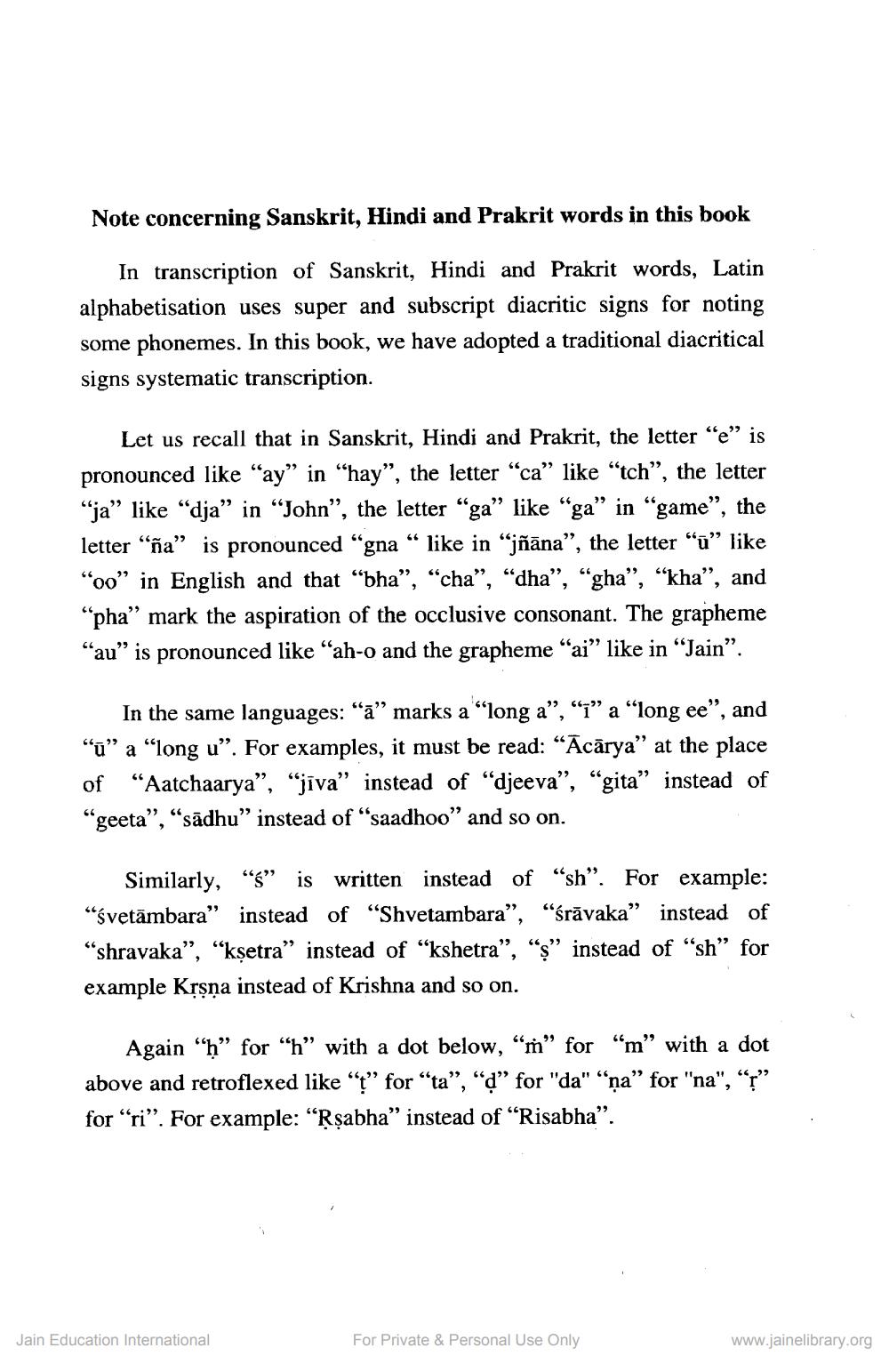Book Title: Jains Today in World Author(s): Pirre Paul AMIEL Publisher: Parshwanath Vidyapith View full book textPage 8
________________ Note concerning Sanskrit, Hindi and Prakrit words in this book In transcription of Sanskrit, Hindi and Prakrit words, Latin alphabetisation uses super and subscript diacritic signs for noting some phonemes. In this book, we have adopted a traditional diacritical signs systematic transcription. Let us recall that in Sanskrit, Hindi and Prakrit, the letter “e” is pronounced like “ay” in “hay”, the letter "ca” like “tch”, the letter “ja” like “dja” in “John”, the letter "ga" like "ga" in "game”, the letter "ña” is pronounced "gna“ like in "jñāna”, the letter “ū” like "00" in English and that "bha", "cha”, “dha”, “gha”, “kha”, and "pha” mark the aspiration of the occlusive consonant. The grapheme "au” is pronounced like "ah-o and the grapheme “ai” like in “Jain”. In the same languages: "ā” marks a "long a”, “I” a “long ee”, and “ū” a “long u”. For examples, it must be read: “Acārya" at the place of “Aatchaarya”, “jīva" instead of "djeeva”, “gita" instead of "geeta”, “sādhu” instead of "saadhoo" and so on. Similarly, “g” is written instead of “sh”. For example: "svetāmbara" instead of “Shvetambara”, “śrāvaka" instead of "shravaka”, “kşetra" instead of “kshetra”, “Ş" instead of “sh" for example Krşņa instead of Krishna and so on. Again “h” for “h” with a dot below, “” for “m” with a dot above and retroflexed like “y” for “ta”, “d” for "da" “ņa” for "na", “Y” for “ri”. For example: “Rşabha” instead of “Risabha”. Jain Education International For Private & Personal Use Only www.jainelibrary.orgPage Navigation
1 ... 6 7 8 9 10 11 12 13 14 15 16 17 18 19 20 21 22 23 24 25 26 27 28 29 30 31 32 33 34 35 36 37 38 39 40 41 42 43 44 45 46 47 48 49 50 51 52 53 54 55 56 57 58 59 60 61 62 63 64 65 66 67 68 69 70 71 72 73 74 75 76 77 78 79 80 81 82 ... 360
